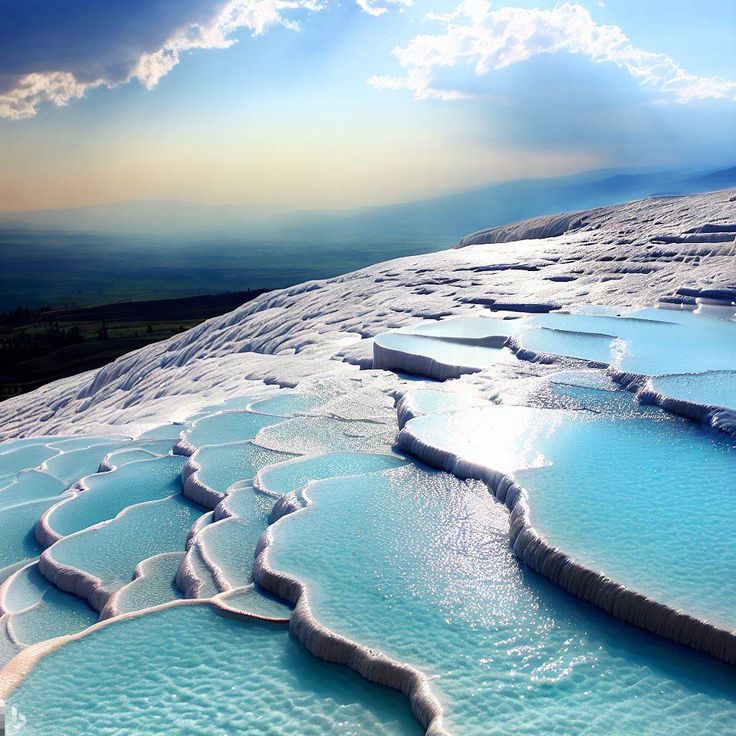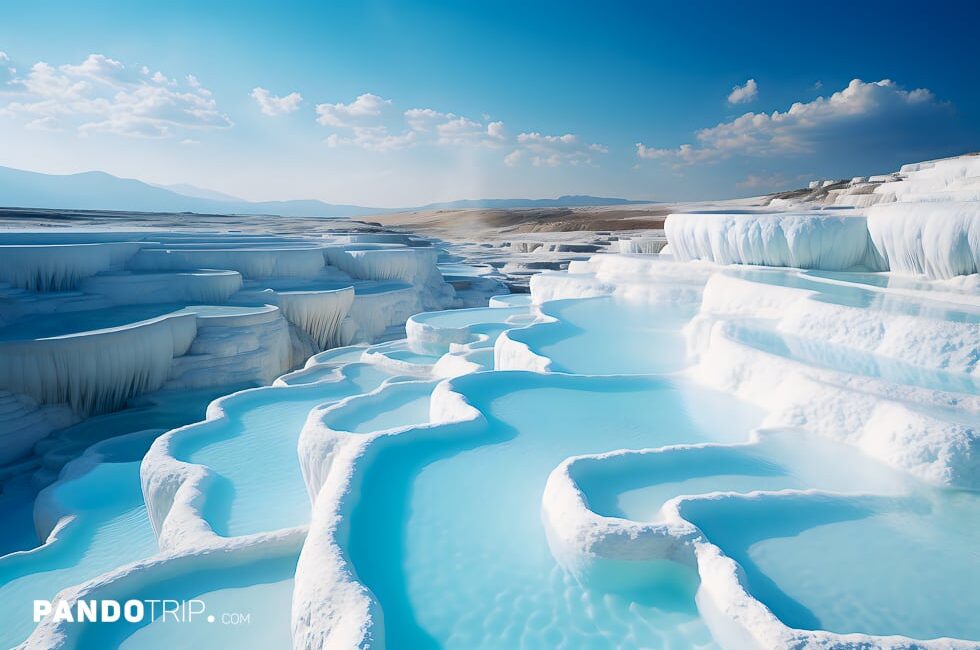Nestled in the Denizli Province of southwestern Turkey, Pamukkale emerges as a surreal landscape straight out of a dream. Known as the “Cotton Castle” in Turkish, Pamukkale is a natural wonder renowned for its breathtaking terraced pools and thermal springs, offering visitors a glimpse into a realm of otherworldly beauty and tranquility.


The Formation of Pamukkale: The unique geological formation of Pamukkale is a result of thousands of years of mineral-rich thermal water flowing down the mountainside. As the calcium-rich water cascades over the terraces, it creates dazzling white travertine formations, resembling a series of frozen waterfalls or terraced pools. Over time, these mineral deposits have formed natural basins filled with warm, turquoise-hued water, inviting visitors to immerse themselves in its therapeutic embrace.
The Terraced Pools: The terraced pools of Pamukkale are the main attraction, drawing visitors from far and wide to witness their ethereal beauty. As sunlight dances on the water’s surface, the pools take on a mesmerizing hue, ranging from brilliant turquoise to shimmering white. Visitors can walk barefoot along the terraces, feeling the smooth, calcified rock beneath their feet, or take a refreshing dip in the warm, mineral-rich waters.
The Thermal Springs: In addition to its stunning terraced pools, Pamukkale is also renowned for its therapeutic thermal springs, which have been revered for their healing properties since ancient times. The warm waters are believed to have a range of health benefits, including improving circulation, relieving muscle aches and pains, and promoting overall relaxation and well-being. Visitors can unwind in the soothing waters while taking in panoramic views of the surrounding countryside.
Hierapolis: Adjacent to Pamukkale lies the ancient city of Hierapolis, a UNESCO World Heritage site that offers a fascinating glimpse into Turkey’s rich history and culture. Founded in the 2nd century BC, Hierapolis flourished as a thriving Roman spa town, with its residents flocking to the thermal springs for their healing properties. Today, visitors can explore the well-preserved ruins of Hierapolis, including its impressive theater, ancient necropolis, and intricately carved Roman gates.
Conclusion: A visit to Pamukkale is a journey into a world of natural splendor and ancient history, where visitors can marvel at the wonders of nature while immersing themselves in the healing waters of its thermal springs. Whether exploring the terraced pools, wandering through the ruins of Hierapolis, or simply soaking in the serenity of this unique landscape, Pamukkale offers an unforgettable experience that will leave a lasting impression on every traveler.






